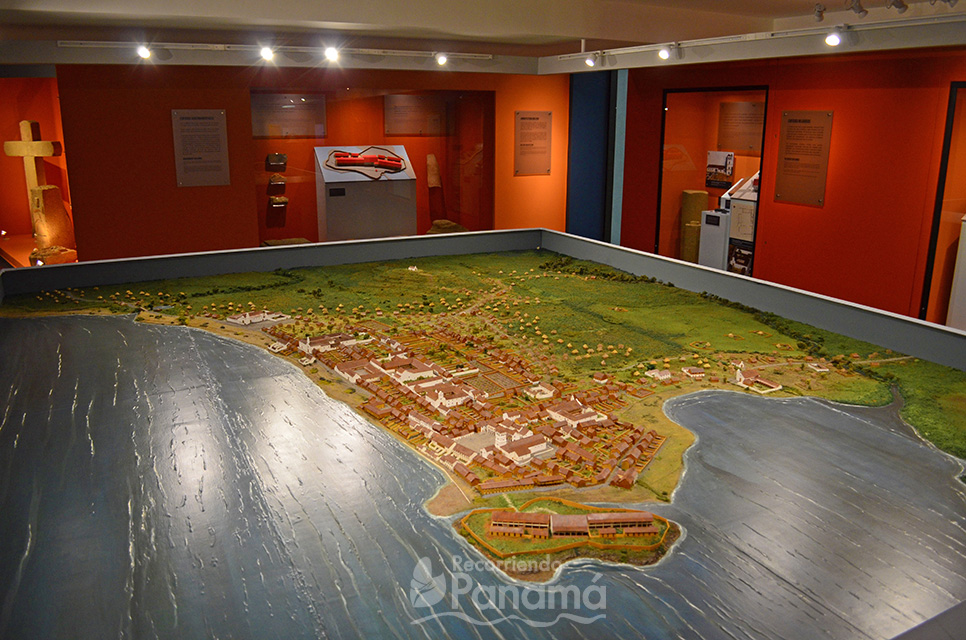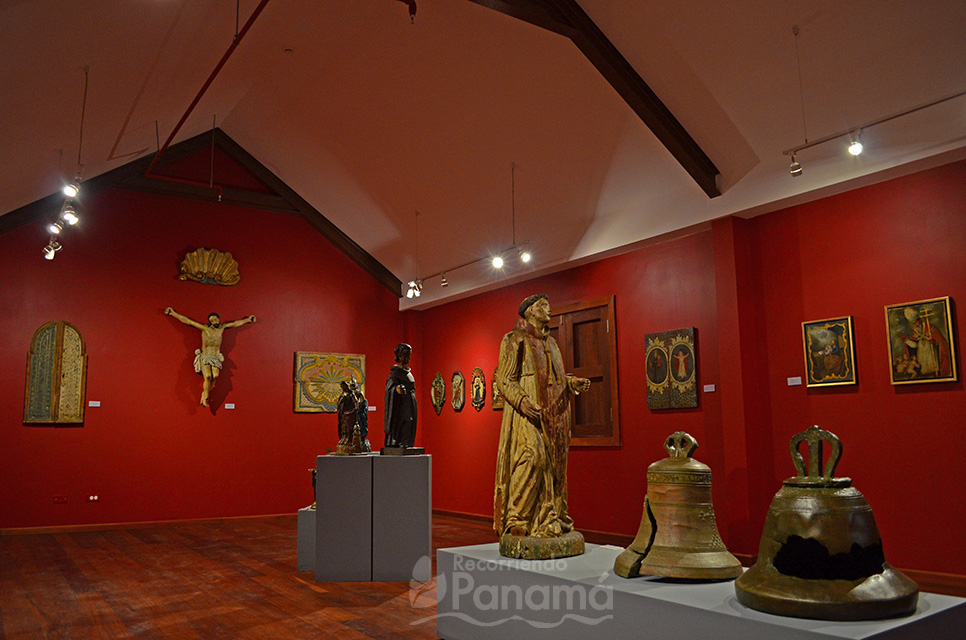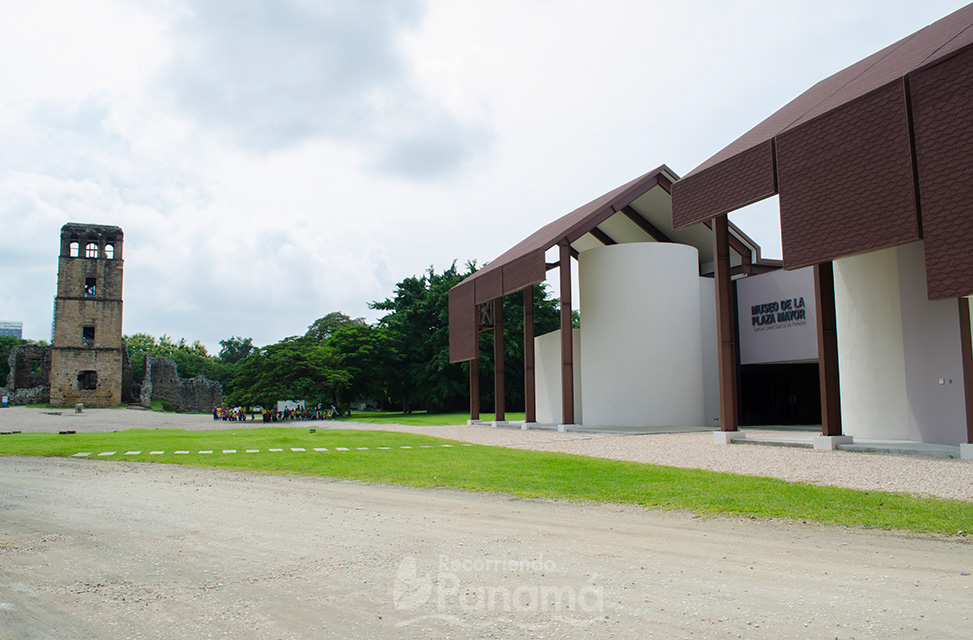
La Plaza Mayor Museum, Samuel Lewis Garcia de Paredes is located in Panama Viejo, it is a space where the archaeological site is interpreted, as the people of pre-Hispanic and Hispanic times live.
It has 13 rooms, some of them are:
A history with more than 1,500 years
At this room, you can see a colonial map with the historical divisions of the time.
In addition, ceramic items, hunting spearheads, kitchen tools.
In another of the murals it is appreciated, by means of a model, what the culture and activities of the people were in pre-colonial times, how they made ceramics, their social life (they had musical instruments and jewelry).
One of the things that caught my attention is that these indigenous people ground corn, yucca and yams and with this they made tortilla, bread and chicha (a drink), on the other hand, they were fishermen and they also hunted animals such as:
- White-tailed deer,
- ñeques,
- tapirs
- and peccaries (the animals we eat today, such as chicken, pig or cow, did not exist in America).
They lived in circular bohio with a diameter of 3 to 4 meters.
It is known that, since 1,5000 years ago, this place was already populated, in addition to being the largest registered in the area, they were dedicated to fishing and agriculture.
Over the years, they evolved and formed a complex organization, they had caciques who inherited their power from their descendants, these caciques dominated several villages.
At the moment, it is known of 80 organizations, their language was called Cueva and its extension went from Chame to Gran Darien (currently Colombia), these indigenous people have possible historical affiliation with the Gunas and the Ngäbe-Buglé.

Funeral Rituals
In this room, for what has been found, the burials are different and are probably related according to the activity of the person or level of importance in society.
An example is that of a man who was buried in a dance position and there is also a woman who was buried over 10 male skulls hundreds of years prior to his death, it is believed that she was a person of great importance. These people were buried near or under their homes.
Pre-Columbian peoples venerated their ancestors, kept the bodies of the chiefs and preserved them for later.
Sometimes they took them out to honor them on their death anniversary.

The encounter between 2 worlds
When the Spanish arrived they found that the inhabitants lived in community, communicated, traded and competed with each other.
The instruction was to populate
Spanish had as an instruction, explore, conquer and populate, they had precise instructions on how to do it, given by King Fernando of Aragon.
The evolution of the Old Panama City
Old Panama City moved from Darien to what is known as Panama Viejo, because in the first the necessary resources were not found and in the Pacific, there was a better climate and more labor force.
The Spanish founded 4 cities in Panama: Acla in 1515 (Darién), Panama in 1519, Nombre de Dios in 1520 (Colón) and Nata in 1522 (Coclé).
The social situation was marked by skin color and place of birth and also the work they did.
As a curious fact, the military career was the first to arrive America.

Architecture and construction
There is not much information about it, but it is known that it was adapted to American conditions.
The first constructions were only huts and bohios, but later of masonry and wood with tile roofs.
Colonial Religious Art
Old Panama City had 2 hermitages and 7 temples with their convents, the exterior was simple but the interior luxurious.
The Church’s mission was not only to evangelize, but also to teach reading, writing and languages such as Latin.
The main religious objects came from Spain and Peru, mostly in the Baroque style.
They were images carved in wood and others were medallions in high relief.

Attack and destruction of the old Panama City
I have always heard that Henry Morgan attacked the city of Panama, however, I did not know its history, he was a privateer from England, he was a friend of the governor of Jamaica, with which he obtained a letter of marque that use to attack Camagüey, Portobelo, Maracaibo and Panama.
He was jailed, only for having attacked Panama since it was after England and Spain signed a peace treaty.
The funny thing is that he was later knighted and became the lieutenant governor of Jamaica in 1675, one of his functions was to eradicate piracy from the Caribbean.
But, he continued to do business with his old comrades for which he was fired. At his death, he had a state funeral.
Among the great inheritance he left, were 130 slaves.
Juan Pérez de Guzmán organized the defense of Panama (known as the Battle of Mata Asnillos), with a poorly armed militia composed mostly of slaves and civilians, so the pirates easily beat them.
After the attack, Morgan stayed another month in Panama, holding hostages and requesting ransom, assuming they had hidden fortunes.
Peréz de Guzmán ordered the destruction of the City during Morgan’s attack, as he believed that he wanted to take the city for the British dominions, but Morgan only wanted to loot it.
Another thing that was done, in desperation was to release a herd of bulls, which had no effect.

The Colonial House
One of the things of the La Plaza Mayor Museum is that it physically shows how it was part of a colonial house of a merchant, the high wooden ceilings, the large windows are observed.
On the ground floor is the commercial area and the kitchen, the latter near a patio and dirty water, it was a wood stove (large houses had a bread oven with controlled temperature), with a cook and an assistant of less than 12 years.
There was another part called the canyon, where the domestic staff lived, it could also be used as a bedroom, cellar or workshop.
On the upper floor was the domestic and living area, there the women sewed, read, prayed, played an instrument and took care of the children.
Curious fact; women urinated or shit in a pot and threw it out the window.
Where is La Plaza Mayor Museum?
La Plaza Mayor Museum is located within the Historic Monumental Complex of Panama Viejo, a World Heritage Site, in Panama City, Township of Parque Lefevre, Cincuentenario Avenue.
You can go both by car (own, taxi or rented), and by public transport.
Hours
- Tuesday to Sunday,
- From 9:15 a.m. to 3:30 p.m.

Prices
Nationals and residents*
- $5.00 adults.
- $2.50 seniors.
- $1.00 children (13-17 years old).
- $3.00 students.
No residents*
- $10.00 adults.
- $3.00 children and students (6-17 years old).
- $5.00 university students with a card.
Includes *: Archaeological site, Museum of La Playa Mayor, Viewpoint of the Torre and internal transport.
- $3.00 entrance fee to the temporary exhibition.
Free, one Sunday a month, Open House Days from 9:00 a.m. to 3:30 p.m. (Archaeological Site and La Plaza Mayor Museum).
These days $1.00 is usually charged for internal transportation, although it is not necessary, because what you have to walk from the entrance to the museum, can be 8 minutes, in which you will see some small ruins, and the Bay of Panama.
Note
- La Plaza Mayor Museum has parking lots, most of you can see from Cincuentenario Avenue.
- Currently it is required to make a booking through a form and send it to reservapanamaviejo@gmail.com, and there are entry times (9:15 a.m., 10:30 a.m., 12:45 p.m. and 2:00 p.m.).
- The payment of the entrance is made by bank deposit, for more information, you can communicate at (505) 226-8915 or by WhatsApp at (507) 63494376.
How to get to La Playa Mayor Museum?
By car, take Balboa Avenue, then continue along Israel Avenue, it will connect you with Cincuentenario Avenue (do not take the subway).
After the 2nd traffic light (on this avenue), on the right hand side will be the entrance to the Archaeological Site.
If you go in the opposite direction, you can take Domingo Diaz Avenue (also known as Tocumen Avenue) enter the old Roosvelt (Avenida Cincuentenario).
Continue along that road, the archaeological site is on the right-hand side after the roundabout, for which you must continue until you can take the opposite road.
Keep to the left and once you enter Cincuentenario Avenue again, you must take the street on the right to enter the parking lots of the Archaeological site.
By bus: the routes that pass through the museum are: C640, C641, C642 and I202, some can be taken at Albrook Mall, others Balboa Avenue or José Agustin Arango Avenue (in front of supermarket 99 of Balboa).
The bus stops where you should get off are Coco Bay-I, Coco Bay-R or Salida Cincuentenario-R.
It depends on which direction you go,
then walk for 3 to 5 minutes to the entrance of the Archaeological Site. minutes.
More Information Patronato of Panama Viejo.
Updated: 2021.
Other places you may like
- Fun Visit to Panama Viejo Archaeological Site
- Knowing the Fascinating Biomuseo of Panama
- 20 Interesting Facts about Panama
- La Merced Museum, a Spectacular Museum in Casco Viejo
- Botones Museum, The Museum to see the Bilbo´s Button
- Metropolitan Butterfly Farm
- Emberá Querá Community
- knowing Barriles Culture


